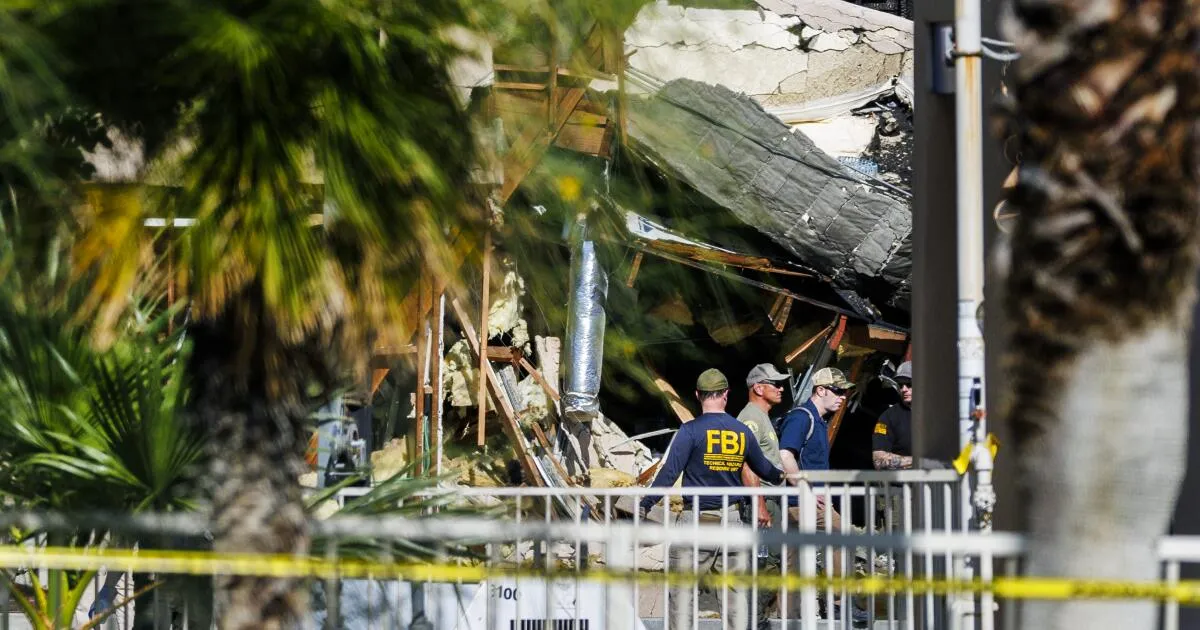
The investigation into the bombing at a Palm Springs fertility clinic on Saturday has revealed alarming details about the suspect, identified as 25-year-old Guy Edward Bartkus. According to law enforcement sources and blast experts, Bartkus was a rocket hobbyist with radical views and possessed an extraordinary amount of high-range explosives, which he appears to have used with precision during the attack. The FBI confirmed that DNA testing identified Bartkus as the individual killed in the explosion that tore through the American Reproductive Centers, injuring four people. The bombing occurred when the clinic was closed and is currently being investigated as an act of intentional terrorism.
In the small desert town of Twentynine Palms, located about an hour from Palm Springs, the FBI is meticulously searching a house that Bartkus shared with his mother. Reports indicate that explosive materials have already been recovered from the residence. In the aftermath of the bombing, some nearby residents were cautiously allowed to return to their homes, while authorities continue to assess the situation. As the investigation unfolds, questions remain about how Bartkus obtained such a large cache of deadly explosives.
Twentynine Palms is home to the Marine Corps Air Ground Combat Center, the largest Marine training base in the world. A spokesperson for the Marine Corps has stated that Bartkus had no affiliation with the military and there are no records of him accessing the base. This comes in light of previous incidents, including a 2021 case where 10 pounds of plastic explosives went missing during a training exercise. Although the explosives were later recovered, little information was released about the incident.
Scott Sweetow, a former bomb expert with the Bureau of Alcohol, Tobacco, Firearms and Explosives (ATF), noted that Bartkus' proximity to a military base will likely be a significant focus for investigators. They plan to interview individuals within Bartkus' social circles, especially those with security clearances that could provide access to explosives. Sweetow also mentioned that materials from military training areas could potentially be repurposed for explosive devices.
One concerning aspect of this case is the ease with which individuals can acquire the chemicals used to manufacture explosives online. Despite regulations from the Consumer Product Safety Commission aimed at vendors, there is minimal oversight for private purchases. Sweetow pointed out that hobbyists can often buy these materials without raising any alarms. He emphasized the lack of comprehensive surveillance tools to monitor online activities related to bomb-making.
Images from the Palm Springs blast reveal a focused destructive force, a phenomenon Sweetow described as unusual, as explosions typically radiate energy in a 360-degree arc. Authorities have confirmed that the explosives were detonated from inside a 2010 silver Ford Fusion sedan, and investigators are working to determine whether Bartkus was inside or outside the vehicle at the time of the explosion. There are indications that he may have attempted to livestream the bombing.
The intensity of the explosion has narrowed down the list of potential bomb-making materials. Experts have pointed out that ammonium nitrate, a common fertilizer, could have been used. This chemical gained infamy due to its use in the Oklahoma City bombing in 1995, which resulted in the deaths of 168 individuals. The explosive force exhibited in the Palm Springs incident is reportedly the largest the FBI official has encountered in his career.
Investigators are examining a range of online posts and materials believed to be linked to Bartkus, including a manifesto outlining a supposed "war against pro-lifers." A website connected to the bombing included a 30-minute audio file in which the speaker expressed anger about existence and justified the targeting of a fertility clinic. The use of usernames associated with Bartkus, including "Pyrotechnical," raises further concern about his mindset and intentions.
The investigation into the Palm Springs bombing continues to evolve, shedding light on the disturbing background of the suspect and the potential methods he used to acquire explosives. As law enforcement agencies piece together the evidence, the implications of this tragic event resonate deeply within the community and beyond.